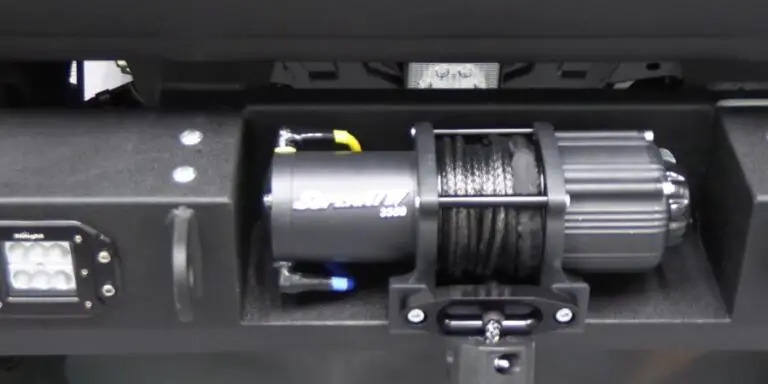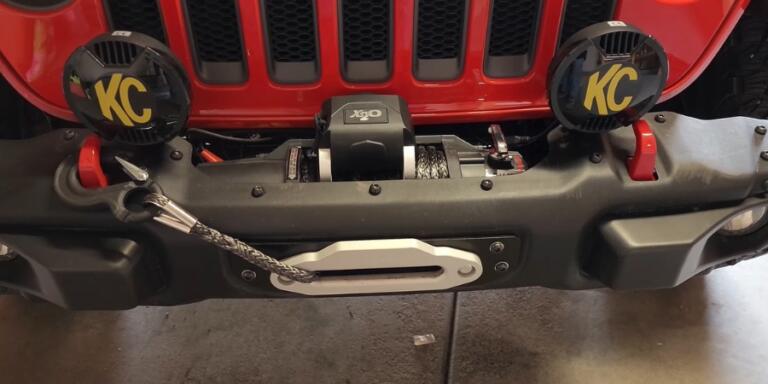Do I Need a Winch on My Truck in 2025
A winch should be at the top of the list of necessary modifications among the many truck parts available on the market. If a vehicle becomes trapped in sand or rocks, a winch offers recovery assistance.
A winch will be increasingly useful to you as you go over more difficult terrain. You may be unsure whether you need a winch on your truck, but we will show you why you need this machine.
Using a winch has a number of important benefits above simply using a strap; some of these benefits are what you experience on a regular basis.
If you enjoy traveling, you no longer have to feel scared of driving on any terrain or getting stuck on the road.
The following are some justifications for thinking about installing a winch on your truck.
Reasons why you need a winch on your truck
It’s comfortable to think that your truck is powerful enough to get out of difficult road conditions, especially for Jeep owners.
This might be true for some vehicles but involves a lot of work. The winch offers much more than just a pulling gear.
Here are some reasons why you need a winch on your truck.
When you get stuck
It may be time to start looking into a winch if you are starting to push your truck to its limits and becoming stuck more frequently.
There may be occasions as you navigate rougher and more difficult terrain when a tow from another car simply isn’t going to cut it.
In other cases, attempting to tow your equipment out with a tow strap might end up doing much more harm than before.
It’s likely that you won’t need a winch if you’re merely driving around dirt roads or going on an adventure. It’s time to start purchasing once you start pushing past that.
Slow and steady
A winch can deliver very controlled motion in small increments, in stark contrast to a strap.
Sometimes, yanking a vehicle out with a strap requires using a lot of throttles and numerous pulls.
You can use them on flatter or other terrains, like snow and sand. Using a tow strap to recover a car from rocky or difficult terrain can be quite damaging.
It is easy to drag a vehicle into or over obstacles using a winch.
To create leverage for removing a Jeep or Truck from a sticky situation, it has a wire rope or synthetic line that is spooled out and fastened to a mounting site (such as a tree, boulder and etc).
A winch can help you successfully navigate muddy, deep waters.
Going hardcore
Winches are the best option to climb some obstacles on harder courses. Sometimes a winch is the sole tool necessary to navigate large ledges, drop-offs, stair steps, and steep slopes.
You also have the luxury of not having to beat on your car to climb a hill if it has a winch.
If after several tries you still can’t make it, winch yourself up and over. Certain individuals might experience some shame for doing this, but we would like to preserve our parts (and our pocketbook).
The only other choice is to slam on the throttle and hopes for the best without a winch.
The end result frequently involves sheet metal crunching or parts breaking. This is why a winch is frequently a necessary piece of gear on many of the tougher trails.
Long reach
While most winches come with 100 feet of cable on them, even the longest straps are only 30 feet long. This additional length might not seem like much, but it can significantly impact recovery times.
It enables the recovery vehicle to remain on level ground as opposed to navigating potentially dangerous conditions in mud, snow, or sand.
There are many more options for vehicle positioning and recovery with nearly 70 additional feet of cable to consider.
How to use winch trucks perfectly
Winches are used for loading and unloading heavy machinery, clearing the way from objects like rocks and trees, towing vehicles or getting them unstuck, transporting heavy objects on hard terrains, and relocating frac tanks and oilfield machinery.
They are very steady and practical equipment to handle, but when used with trucks, they become more versatile and occasionally complex.
Here are a few tips for making the best use of winch trucks to the fullest extent possible without causing any harm.
- Before anything else, plug in the winch and stop clutching to free the winch’s wire cable.
- Locate a sturdy object to which you may secure your winches, such as a tree or a solid boulder that can sustain the force.
- Remove the necessary cable from the winch so that you can use it to tow the automobile or for any other purpose.
- To make it truly effective, pull a tree-saver strap and use an anchor shackle to secure it around the object.
- Next, secure the shackle with the winch hook, making sure the tip is pointed upward.
- Before removing your truck, make sure the winch cable is out of the way.
- After engaging the truck in neutral, get inside and use the remote control to winch the car.
- When you are free of the stuck position, stop winching.
- Release the shackle to disconnect the winch.
- Use the remote to rewind the winch cable so that it can be packed up.
- Once the shackle has been removed from the rock or anchored on the tree, you are good to go.
Final thoughts
Having a winch on your truck can be a quick and effective solution to get out of some stressful circumstances.
It can help you get out of being stuck in mud or sand or clear your path if there are rocks or trees in your way.
There are numerous additional industrial and commercial applications as well, such as in oil fields, mines, forests, and construction zones where large loads must be moved quickly to make more room.


